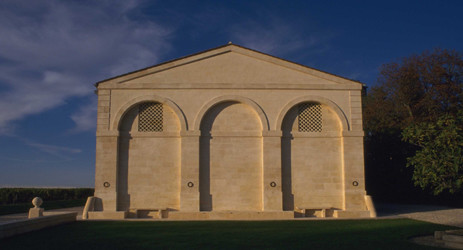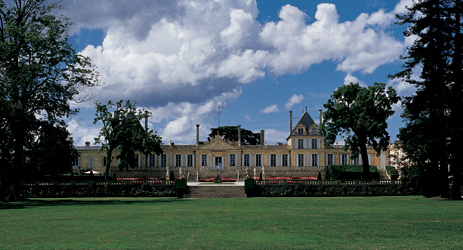Château Angélus
There are three churches in St-Emilion, and when the Angélus bell is rung, it’s said there is just one spot where all three calls to prayer can be heard. The Angélus rings at dawn, midday and sunset. So the label design was a no-brainer. Fortunately, it’s also a strong image that reinforces the identity of the wine. Since it’s unreasonable to expect visitors to stand respectfully in the vineyards at just the right moment, the château has, in recent years, made an elaborate carillon that can ring out dozens of national anthems. The idea has charm – and echoes the bell theme – but if an international group arrives on a winter afternoon, the entrancement can wear thin.
Château Mouton Rothschild
Baron Philippe de Rothschild, always the innovator, came up with the idea of commissioning an artist to design his wine label in 1924, two years after he took over running the estate. At that time, few Bordeaux wines were château-bottled, so labels were not considered that important. The 1924 label featured a Cubist design by Jean Carlu, which must have seemed daring at the time. In 1945, Baron Philippe created a special label to celebrate the end of World War II, the Victory label based on Churchill’s famous ‘V for Victory’ sign. Thereafter, ‘artist labels’, commissioned each year, became the norm at Mouton. (Other wine estates, such as Nittardi in Chianti Classico, have since adopted the same practice.)
The baron was very well connected and was able to recruit such renowned artists as Cocteau, Braque, Dali, Miró, Chagall, and even Picasso. Such labels became a brilliant form of promotion, as wine lovers eagerly awaited the announcement of the selected artist for each vintage. Some bottles even became collectors’ items on the strength of the labels as well as the wine. It was also a bargain for the baron: no money changed hands; instead the artists were compensated with cases of wine.
Following Baron Philippe’s death in 1988, the tradition was continued by his daughter Philippine, and all of the labels are on display at the Mouton museum at the château.
Château Pape Clément
This famous vineyard within the city boundaries of Bordeaux is believed to have been planted in 1252. It was presented to Bertrand de Goth by his brother to celebrate Bertrand’s appointment as archbishop of Bordeaux. When, in 1305, Bertrand was elected pope and took the name Clément V, he donated the vineyard to the archbishops of Bordeaux in perpetuity – a succession that came to an end only with the French Revolution. And that is why the label of this estate displays on its label the papal coat of arms.
Click to see the full article on Decanter Premium>>

Translated by Sylvia Wu / 吴嘉溦
All rights reserved by Future plc. No part of this publication may be reproduced, distributed or transmitted in any form or by any means without the prior written permission of Decanter.
Only Official Media Partners (see About us) of DecanterChina.com may republish part of the content from the site without prior permission under strict Terms & Conditions. Contact china@decanter.com to learn about how to become an Official Media Partner of DecanterChina.com.









Comments
Submit